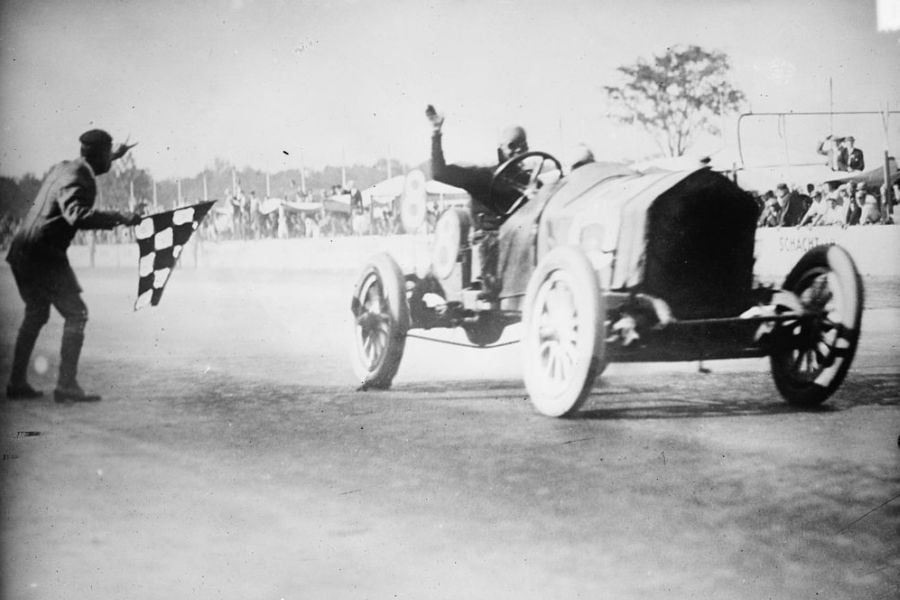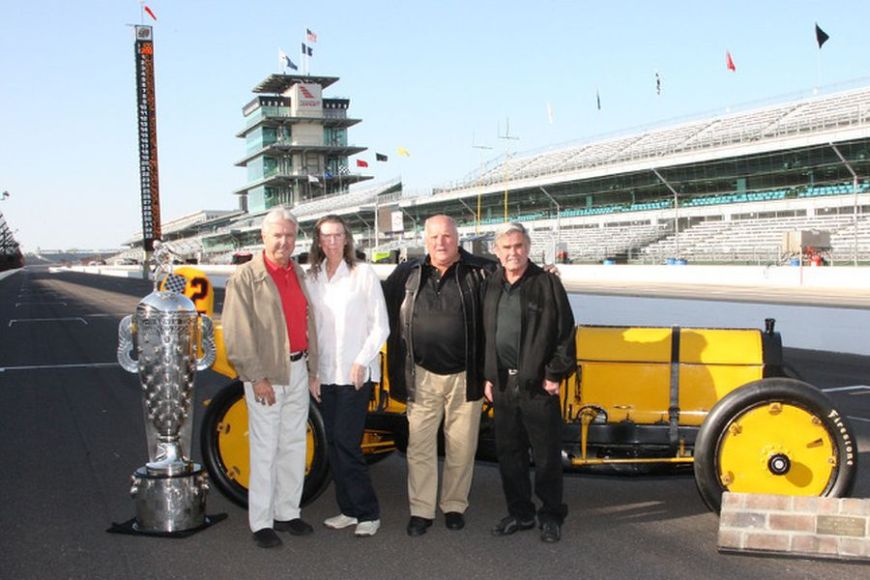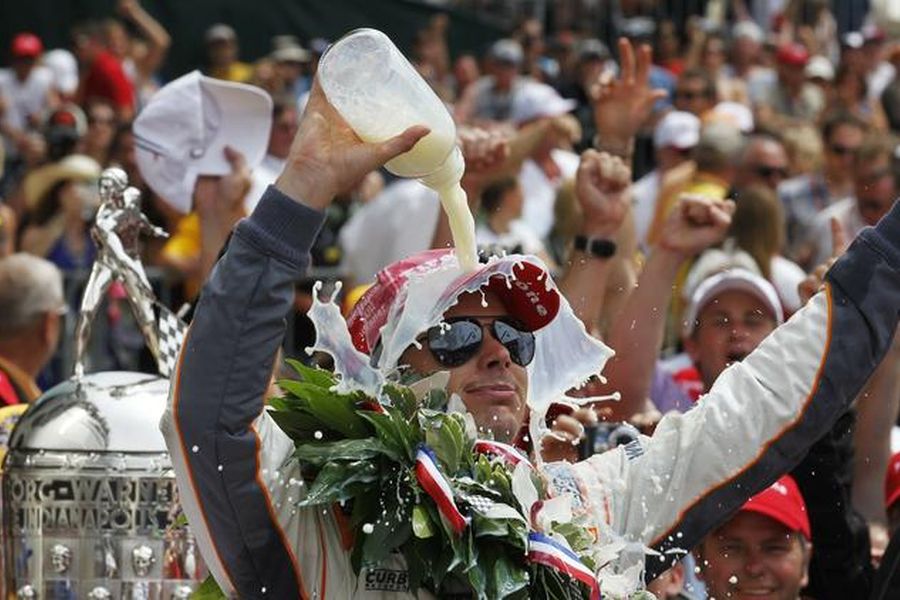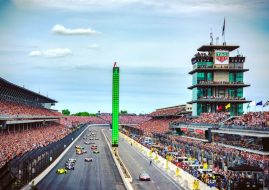Indianapolis 500 – The Greatest (American) Race in the World
For the Indianapolis 500, Americans would say it’s the greatest race in the world. Of course it isn’t, but definitely, it’s one of the greatest and oldest motorsport events in the world. And it took place at the greatest racing venue in the world – the Indianapolis Motor Speedway.
IMS opened its door in 1909, 500-mile race started in 1911
The history of Indianapolis 500 is closely connected with a history of the Indianapolis Motor Speedway because that race was the only annual event for decades, until 1994 when NASCAR came to Indianapolis. The IMS opened its doors in 1909, the first 500-mile race at 2.5-mile oval was held in 1911.
The first Indianapolis 500 was a result of a new marketing strategy which reduced the number of races from sixty in 1910 to only one main event in 1911. The last racing event besides 500-mile race was the Harvest Classic in 1916. Since then, until 1994 and NASCAR’s appearance at IMS, Indianapolis 500 was the only race at the world’s greatest race course.

A picture from the first ever Indianapolis 500 race
40 participants in the first ever Indianapolis 500
The first 500-mile race held on Memorial Day on May 30th, 1911, was attended by 80,000 spectators. Forty cars started the race, led by the Stoddard-Dayton pace car, driven by IMS owner Carl Fisher.
It’s interesting that grid positions were determined by the date of filling the official entry form. Forty-six cars were on the list, forty of them qualified for the race by sustaining 75 mph (121 km/h) at the quarter-mile long main straight.

Ray Harroun’s Marmon Wasp
Ray Harroun was the first ever Indy 500 winner
Ray Harroun, an engineer for the Marmon Motor Car Company, came out of retirement to compete and he won the race. After the race, he retired from racing completely. Harroun was driving the #32 Marmon Wasp car equipped with 7.8-litre 6-cylinder Marmon engine. After 200 laps and more than 6 hours and 42 minutes of racing, he won with the average speed of 74.6 mph (120 km/h). Most of the drivers were racing with a riding mechanics in their cars, Harroun was racing alone. He was relieved by another driver Cyrus Patschke for approximately 35 laps at the halfway point of the race.
Unfortunately, the first ever Indianapolis 500 didn’t pass without fatal victims. On lap 12, Arthur Greiner’s Amplex hit the wall on turn 2 and his riding mechanic Sam Dickson was killed.Of forty starters, 14 didn’t finish the race. Only 12 cars completed all 200 laps.

Joe Dawson – the 1912 Indianapolis 500 winner
Number of entrants limited to 33 since 1912
Since 1912, the number of entrants was limited to 33 and that number remained until today. In 1912, American Joe Dawson won the race and then, in 1913, the Frenchman Jules Goux became the first international winner, driving a Peugeot. Three more races were held before World War I stopped the racing activities in 1917 and 1918. All winners were non-American: Rene Thomas (France, Delage), Ralph DePalma (Italy, Mercedes) and Dario Resta (UK, Peugeot).
After the World War I, until new interruption due to World War II, all the winners except one were the Americans. The only non-American winner was the Frenchman Gaston Chevrolet in 1920. He was the younger brother of Louis Chevrolet, a founder of the Chevrolet company.
Louis Meyer was the first three-time winner
In 1923, Tommy Milton became the first two-time winner. He won the first time in 1921, driving a Frontenac for Louis Chevrolet. Two years later, he won the race driving a Miller for HCS Motor Company. In 1936, Louis Meyer became the first three-time winner. He won the race in 1928, 1933 and 1936. Wilbur Shaw was the next on the list of multiple winners, he won three times between 1937 and 1940.
Shaw and Hulman saved the speedway and the race
During World War II, the track was abandoned and fell into disrepair. The owner Eddie Rickenbacker wasn’t interested in continuing the races, so, the three-times Indy 500 winner Wilbur Shaw started the campaign to find a new owner who would save the track.
Businessman Tony Hulman bought the track in November 1945 and immediately ordered major renovations and repairs. Hulman family is still the owner of Indianapolis Motor Speedway.
Indianapolis 500 was a part of F1 championship
The races were continued and the track’s reputation grew so much that the Indy 500 became a part of the Formula One World Championship during a course of 10 years (1950–1960).
Although the race counted towards the F1 championship, non-American drivers refused to travel to the US, so the only one who competed was the 1952 F1 champion Alberto Ascari. In the season when he became the world champion, Ascari raced at Indy’s oval with Ferrari but retired after 40 laps.

Rick Mears, Mari Hulman George, A.J. Foyt and Al Unser Sr.
Four-time winners: AJ Foyt, Al Unser, Rick Mears
In 1961, when the race was a part of the USAC Championship, AJ Foyt scored his first victory. He later became one of only three four-time winners. Foyt was the Indy 500 winner in 1961, 1964, 1967 and 1977. Al Unser was the second four-time winner, triumphing in 1970, 1971, 1978 and 1987. The third man on the list of Indy 500 immortals is Rick Mears, who won four times in 1979, 1984, 1988 and 1991.
Championships were changing, the race was always there
In 1983, after four years of conflict and organizational disputes between USAC and CART, the Indianapolis 500 became the part of the CART Indy Car World Series and remained in that status until 1995. In 1996, the race became the part of the USAC-sanctioned Indy Racing League. In 2008, after an open-wheel unification of Indy Car and Champ Car, the race is the highlight of the season in the IndyCar Series.
Multiple winners and legends who won Indy 500
Besides drivers we already mentioned, other multiple winners of the Indianapolis 500 (until 100th running in 2016) are Mauri Rose, Johnny Rutherford, Bobby Unser, Helio Castroneves, Dario Franchitti (all by three times), Bill Vukovich, Rodger Ward, Gordon Johncock, Emerson Fittipaldi, Al Unser Jr., Arie Luyendyk, Dan Wheldon and Juan Pablo Montoya.
Some other world known racing legends and champions who won at Indianapolis 500 are Jim Clark (1965), Graham Hill (1966), Mario Andretti (1969), Mark Donohue (1972), Danny Sullivan (1985), Bobby Rahal (1986), Jacques Villeneuve (1995) or Eddie Cheever Jr (1998). Of active drivers, Indy 500 winners are Castroneves, Montoya, Buddy Lazier, Tony Kanaan, Scott Dixon, Ryan Hunter-Reay and Alexander Rossi.

Janet Guthrie was an absolute sensation on the 1977 Indianapolis 500 grid
Janet Guthrie was the first female driver at Indy 500
For many decades of competition at Indianapolis Motor Speedway, the race organizers had a chauvinistic attitude against women, even forbidding female reporters to enter the pit lane area until 1971. In 1977, Janet Guthrie broke the gender barrier, becoming the first women to qualify for the Indy 500. In the race, she retired after 27 laps.
In the following decades, Sarah Fisher recorded nine starts at Indy 500. Danica Patrick scored the best result among female driver, finishing in the third place in 2009. In total, ten female drivers participated at Indy 500 (until 2017). Besides Guthrie, Fisher and Patrick, the others are Desire Wilson, Lyn St. James, Milka Duno, Simona de Silvestro, Ana Beatriz Figuereido, Katherine Legge and Pippa Mann.
Graham Hill was only to win the Triple Crown
As one of the oldest and the most significant races in the world, the Indianapolis 500 is considered as a part of the Triple Crown of Motorsport, together with the 24 hours of Le Mans and Formula One Monaco Grand Prix. Seventeen drivers have competed in all three races but only one man in a history managed to win the Triple Crown – Graham Hill.

Kissing the Bricks is a privilege of winners
Indy 500 traditions: a bottle of milk, kissing the bricks…
As one of the most traditional races in the world, the Indy 500 features some unusual traditions, such is drinking a bottle of milk for the race winner. That tradition was started by Louis Meyer in 1936. The winner also has an opportunity to kiss the ‘yard of bricks’. That tradition was started by NASCAR race winner Dale Jarret in 1996 and accepted by Indy 500 winners since 2003.
Ladies and gentlemen, start your engines
The Indy 500 also has a traditional starting command in which someone from IMS management says „Gentlemen, start your engines!“ In 1977, following Janet Guthrie’s successful qualifying attempt, a controversy began to surround the famous starting command. The IMSA management didn’t want to change a command but they gave up under pressure. So, the command was „In company with the first lady ever to qualify at Indianapolis, gentlemen, start your engines.“

Indy 500 winners get a bottle of milk and Borg-Warner Trophy
From $14,250 to couple of million prize
The main prize for the Indianapolis 500 winner, since 1936, is the Borg-Warner Trophy. It is named for and was commissioned by automotive supplier BorgWarner. The trophy features names and faces of race winners. It is permanently housed at the Indianapolis Motor Speedway Museum, winners get a replica. The amount of cash for the winner is also huge, a couple of million. The prize for the first ever winner back in 1911 was $14,250.
Average speed increased from 120 km/h to 300 km/h
Not only the prize is what was multiplied since 1911, the average speeds were also far from the speeds in the inaugural race. In 2013, when Tony Kanaan was the winner, his average speed over 200 laps was 187.433 mph (301.644 km/h). In the first race, qualifiers had to exceed 121 km/h and Haroun won the race with an average of 120 km/h, today IndyCars cars are easily flying over the 370 km/h.

Sometimes races went wrong
Long list of fatal victims
Unfortunately, such speeds are dangerous and Indianapolis 500 has a long list of fatal casualties during its centennial history, which placed the IMS among the most dangerous race tracks in the world. Eight years after the inaugural race and the first fatal victim, two drivers and one mechanic lost their lives in the 1919 edition of a race.
The 1931 edition also took three victims. During the practice, one driver and his mechanic lost their lives but the most unusual accident ever happened during the race. The rear tire from one car went off the track, jumped over the fence and killed the 11-year-old boy in a neighborhood. The 1930s were the worst decade in a history of race, with 23 fatal victims between 1930 and 1940.
No deaths at Indy 500 since 1996
In the following decades, deadly accidents weren’t so common but some famous drivers lost their lives during the Indy 500. After winning the race in 1953 and 1954, Bill Vukovich lost a life in a crash while leading the 1955 race. In 1959, Jerry Unser Jr., brother of Al and Bobby, was killed in a practice crash. Some other notable victims were Tony Bettenhausen (1961) and Mike Spence (1968). Scott Brayton was the last driver who lost his life during the Indianapolis 500. He won the pole position for the 1996 race and lost his life a few days later during the practice for the race.
Video: Indianapolis 500 history
Photos: Getty Images, motorsport.com, indianapolismotorspeedway.com, espn.com








